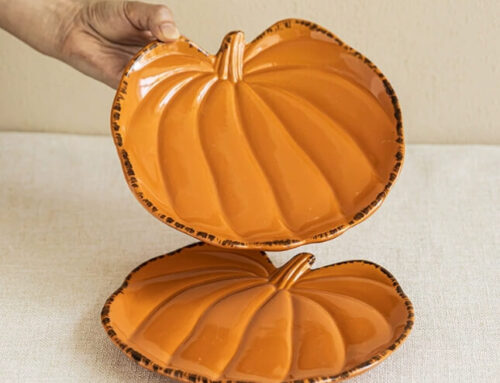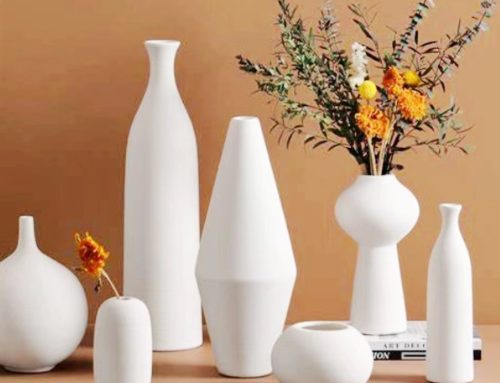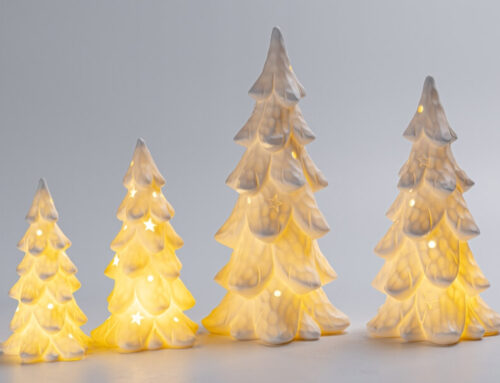Introduction: The Charm of Reactive Glaze
Ceramics have always been a fascinating blend of artistry and functionality, but reactive glaze ceramics take this to another level. Renowned for their unique finishes and intricate patterns, reactive glaze ceramics transform ordinary tableware into captivating works of art. This article explores the charm and technology behind ceramic reactive glaze process and why it stands out in the ceramic world.
What is Reactive Glaze?
Reactive glaze is a specialized ceramic finish known for its unpredictable and artistic patterns. The glaze reacts chemically during firing, creating distinctive effects such as colour transitions, speckles, or textured surfaces. Unlike traditional glazes, which aim for uniformity, reactive glaze celebrates the beauty of imperfection, offering a one-of-a-kind look to every piece.

The Science Behind Reactive Glaze
The unique beauty of reactive glaze ceramics lies in the intricate interplay of chemistry, materials, and heat. Here’s a deeper look into the science behind this transformative process:
- Composition of Reactive Glaze:
- Reactive glazes typically include metallic oxides, such as iron, copper, or cobalt. These elements are crucial for the chemical reactions that occur during firing.
- The glaze mixture also contains silica, alumina, and fluxes, which influence the glaze’s flow and adherence to the ceramic body.
- Chemical Reactions in the Kiln:
- During firing, the high temperatures—often exceeding 1200°C—initiate complex chemical reactions. Metallic oxides interact with the glaze components, producing stunning visual effects such as speckles, gradients, or mottled textures.
- The kiln atmosphere plays a pivotal role. In an oxidation firing, oxygen combines with metallic elements to create vibrant colours, while reduction firing reduces the oxygen available, leading to deeper, richer tones.
- Temperature’s Role:
- The firing temperature significantly affects the glaze’s behaviour. Controlled heating and cooling allow the glaze to flow, pool, or crystallise in unique ways, enhancing the depth and complexity of the finish.
- Interaction with the Clay Body:
- The compatibility between the clay body and the glaze is vital. Some clay types absorb the glaze differently, influencing the final appearance and texture. For example, darker clay bodies can create dramatic contrasts with lighter reactive glazes.
- Unpredictable Beauty:
- Unlike traditional glazes, reactive glazes thrive on unpredictability. Variations in kiln conditions, glaze thickness, and firing techniques ensure that no two pieces are exactly alike, making each creation truly unique.
By blending art and science, reactive glaze ceramics embody the perfect synergy of natural processes and human ingenuity. This meticulous process ensures that every piece is not just functional but also a work of art.
How Ceramic Factories Apply the Process
Creating reactive glaze ceramics is a captivating journey that combines technical expertise with artistic vision. Here’s an in-depth look at how factories bring this unique finish to life:
- Material Selection: The process begins with carefully chosen raw materials. The clay body must be compatible with the reactive glaze to ensure proper adhesion and firing results. Metallic oxides are added to the glaze mixture to enable the chemical reactions.
- Design Planning: Designers collaborate with artisans to conceptualise patterns and finishes. Whether aiming for bold transitions or subtle speckles, the design phase ensures alignment with the desired aesthetic.
- Glaze Application: Layers of reactive glaze are applied using methods such as:
- Dipping: Submerging the ceramic piece into the glaze for an even coating.
- Brushing: Adding intricate details and variations manually.
- Spraying: Allowing controlled gradients and patterns across the surface.
- Kiln Firing: The heart of the process, kiln firing, is where the magic happens. The glaze reacts at high temperatures, with the outcome influenced by:
- Temperature Variations: Gradual or rapid temperature changes can impact flow and texture.
- Firing Atmosphere: Oxidation or reduction atmospheres bring different effects to the glaze.
- Quality Control: After firing, each piece is inspected for consistency and quality. Though variations are celebrated, defects such as cracks or sharp edges are eliminated.
- Finishing Touches: Once the reactive glaze process is complete, additional steps like polishing or adding protective coatings enhance durability and appearance.
This meticulous process showcases the blend of craftsmanship, innovation, and precision required to create reactive glaze ceramics. It’s a testament to the dedication and skill of artisans and factory teams.
When ceramic manufacturers offer customised reactive glaze products, they tailor the firing process to meet the customer’s specific design requirements, resulting in truly unique creations. Popular reactive glaze ceramic items include tableware and candle jars.
Unique Features of Reactive Glaze Tableware
Reactive glaze tableware is celebrated for its:
- Visual Appeal: Stunning colour transitions, speckles, and textured finishes make each piece a visual delight.
- Durability: The high-temperature firing process enhances the strength and longevity of the tableware, ensuring it stands up to daily use.

Versatility in Tableware: Applications of Reactive Glaze Technology
Reactive glaze technology enhances a wide range of tableware, offering exceptional versatility for various applications. From functional pieces to decorative accents, it brings style and charm to any setting:
- Dinnerware Sets: Reactive glaze adds character to plates, bowls, and serving platters, making them suitable for both casual meals and formal dining occasions.
- Drinkware: Mugs, cups, and tumblers featuring reactive glaze designs are perfect for enjoying coffee, tea, or other beverages with an artistic touch.
- Serving Pieces: Reactive glaze trays and serving bowls create a striking centrepiece for gatherings, combining practicality with elegance.
- Home Décor: Beyond the dining table, vases and decorative items crafted with reactive glaze elevate the aesthetic appeal of interiors.
- Custom Designs: The adaptability of reactive glaze allows for bespoke creations, tailored to specific themes or styles, making them ideal for personalised gifting or branding.
The broad applications of reactive glaze technology ensure that it can seamlessly fit into diverse settings, from rustic farmhouse tables to sleek modern interiors. Its transformative impact makes it a popular choice among tableware enthusiasts and decorators alike.
Selecting and Appreciating Reactive Glaze Ceramics
When choosing reactive glaze ceramics, keep these tips in mind:
- Inspect the Finish: Look for smooth, well-applied glaze with no sharp edges or cracks.
- Appreciate Uniqueness: Understand that variations in colour and texture are part of the charm.
By valuing these qualities, you can truly appreciate the artistic intent behind each piece.
Why Choose Reactive Glaze Dinnerware?
Reactive glaze dinnerware offers more than just aesthetics:
- Aesthetic Appeal: Each piece is a miniature artwork, elevating your dining experience.
- Practical Benefits: Its durability and versatility make it suitable for both everyday use and special occasions.
- Emotional Connection: Owning a reactive glaze piece feels personal, as each one is uniquely crafted.
Caring for Your Reactive Glaze Tableware
To ensure your reactive glaze ceramics remain beautiful for years to come:
- Cleaning: Hand wash with mild detergent to preserve the finish. Avoid harsh abrasives.
- Storage: Stack with care, using protective layers to prevent scratches.
- Usage Tips: While many pieces are microwave and dishwasher safe, always check manufacturer guidelines.
Reactive Glaze is The Perfect Blend of Art and Technology
Reactive glaze ceramics are a testament to the harmonious blend of creativity and technology. Their unique charm, coupled with practical benefits, makes them an irresistible choice for tableware enthusiasts. By investing in reactive glaze dinnerware, you bring a piece of artistry into your home that’s both functional and deeply personal.
Are you ready to explore the world of reactive glaze ceramics? Whether you’re a small business owner or a distributor, we’re here to help. Visit our website Homey Ceramic to request a free quote and discover how our custom designs can meet your needs.




